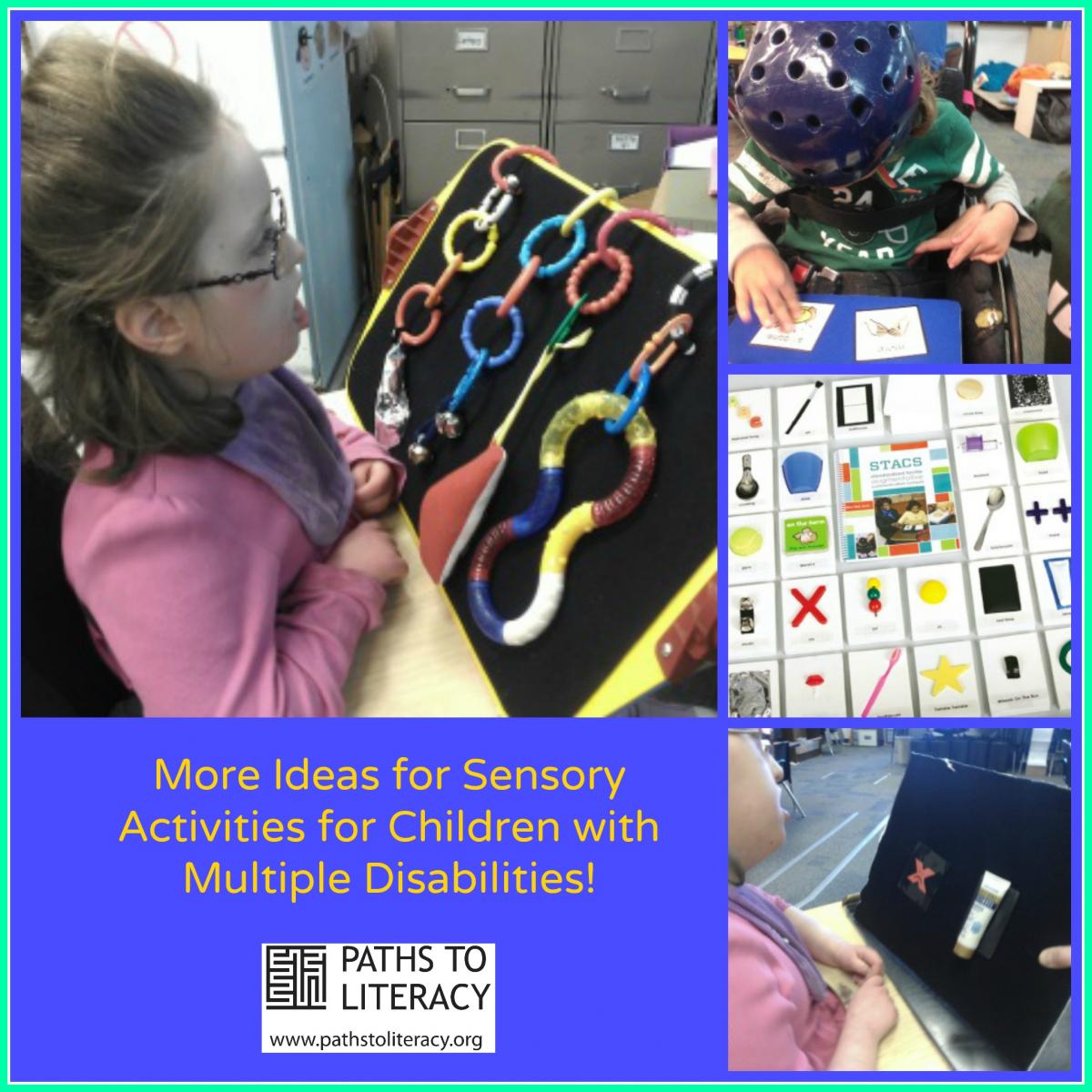Q & A about Sensory Activities to Improve Communication and Literacy for Children with Visual and Multiple Disabilities

Thank you to everyone who attended my webinar Sensory Activities: Experiences to Improve Communication and Literacy for Children with Visual and Multiple Disabilities through Perkins. I had so many great questions from all of you, but unfortunately I wasn’t able to answer them all within the time we had. Here are some of the questions, and my answers, to share with everyone.
1. What sensory boxes do you use?
I have the following sensory boxes in use in several self-contained classes. The ones with the asterisks are my students’ favorites that they love using over and over. If you have sensory boxes you like and use, please post and share. We all can use more ideas on this one.
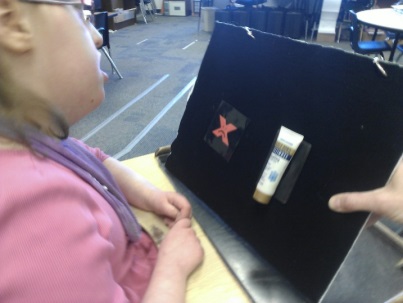
- *Instruments (various instruments to play)
- *Dress Up (different colored and textured clothes and accessories, also a mirror)
- *Lotion (my more severely involved kids love this one)
- *Squeezes (different mitts and textures to use for massage)
- *Let’s Pretend (a new one, with different hats and masks of animals & jobs, also a mirror)
- *Move It (a new one, with items like flags and scarves on wrist bands, to encourage movement)
- DJ Dance Party (a radio that is switch accessible, my older kids like this one)
- Toy Gym (various textured and sounding objects to hang from elastic on a toy bar)
- Peek-A-Boo (a small “parachute” you can hide under)
- Switch toys (switch operated toys, we change the toys in the box every few months)
- Beads (shiny beads of different colors, to dangle, wear, or dig in, depending on the student)
2. What is the name of the symbol system you were using?
The tactile/partial object symbols I was using were home made, but I used a kit from the American Printing House for the Blind (APH), called Tactile Connections Kit: Symbols for Communication. This item isavailable through Federal Quota. There are different colored/shaped hard cards, and you can attach different objects onto them. The book has ideas and guidelines for how to plan your own symbol system. There is a new, pre-made system from APH called STACS (Standardized Tactile Augmentative Communication System) that was not pictured, but has similar pre-made tactile symbols (also Federal Quota). 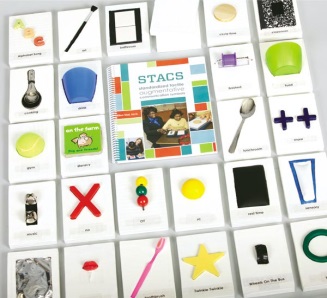
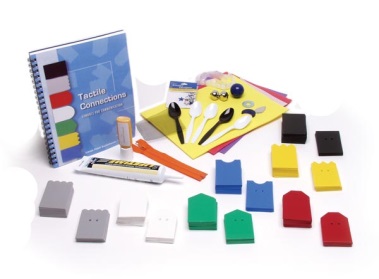
3. Do you have ideas for preschool activities?
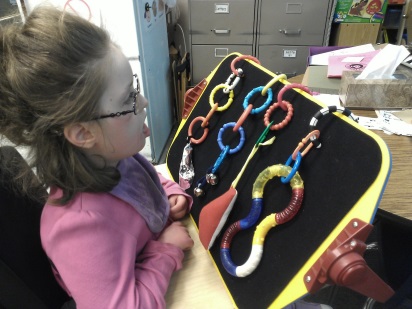
Of the boxes I have, my younger kids like instruments, lotion, move it, toy gym, peek-a-boo, and beads. I’ve thought about a play dough one but haven’t made it yet. Some Special Education Preschool classes have a big sensory tub that they use regularly and change out the contents each month, if this exists you can make a sensory box to go along with the sensory tub they already have, & keep a small amount of the materials in the box for later use.
4. Can you make suggestions for older students?
My older kids’ favorites are Dress Up, Move It, Let’s Pretend, & DJ Dance Party. Also sometimes I use boxes for younger kids but I ask my older kids to write a book for the younger ones. This is particularly fun if there is a group field trip where the different ages can meet. Also you can have them send messages back and forth – older kids can write a list of suggestions for the younger ones, younger ones can write a list of what they liked, etc.
5. Do you have any objects you pair for "wh" questions to make them more tangible?
If the student is able to do some categorizing, you can pair different colored cards with a question symbol. So, make up a symbol for questions – I use a question mark make from high marks. Then, if you put a question mark on a yellow cards (which I use for people), this means WHO. If you put the question mark on a black card, which I use for objects/activities, this means WHAT. A question mark on a Grey card (which I use for miscellaneous) along with a watch means WHEN. I just started this with my student featured in the webinar. This can be too confusing for many kids though. For these kids I start using a “question stick” during activities – choosing a stick of a particular color. Then after using the question stick for a while you can put a similar/smaller version of the question stick on a card, to indicate “I have a question”. For these kids, when they say “I have a question” I just ask and answer the question most applicable to the situation.
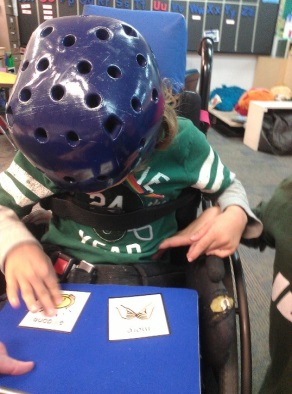
6. How do you help students who are physically hard to manage because of aggression?
We all have students like this. What I do is start working in as small a group as possible so I can give the most attention to the challenging student. Then I try different sensory things until I find what they really like. It might not be a sensory box you have – for example I have one student who loves to swing. Then I do the preferred sensory activity with them, focusing on the early stages of activities for a while – doing/experiencing the sensory activity, and communication related to the activity (especially asking for more and telling feelings). Also I watch closely for when they are using body language to say “I’m done” and teach them how to use their system to ask for this. I do my best to honor “I’m done” especially at the beginning; they might only do the activity for a short time at first. Over time I build up a positive routine with them and just slowly add on. For me, this often takes a long time – several months of working up. I’d love to hear others ideas on this one, we all are challenged by these situations.

